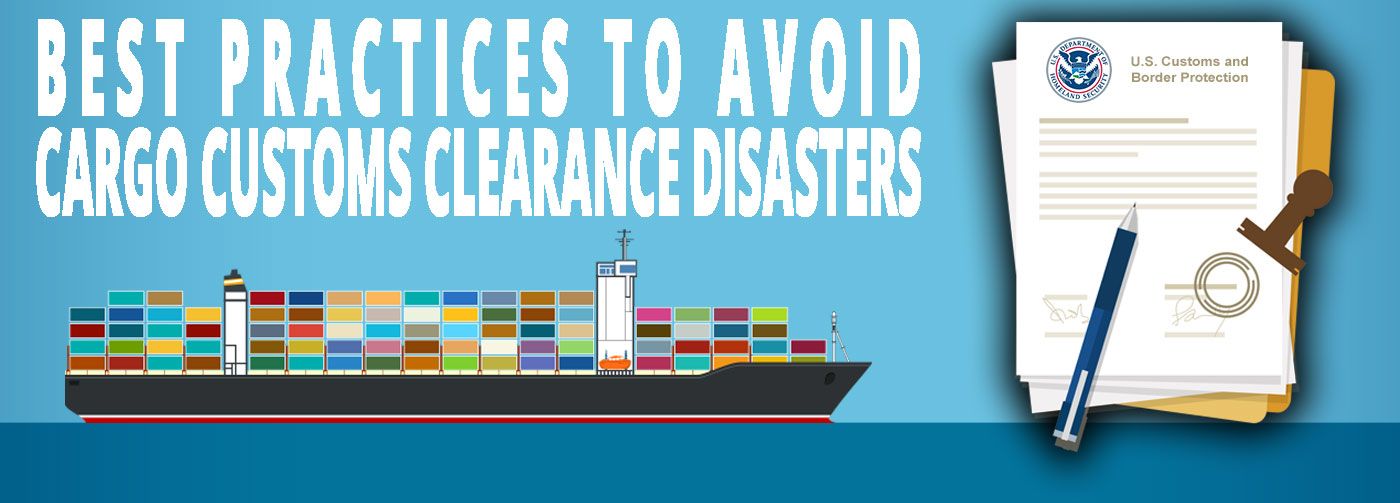
The challenges of importing and exporting can be complex and tedious. And while shippers and their logistics partners work hard together to create a seamless process for moving cargo over the ocean or across borders, the biggest risks often involve paperwork. To help avoid unneccesary cargo customs clearance delays and disasters as a result of paperwork, keep these three best practices in mind.
Have The Necessary Customs Clearance Documents
One of the most common preventable mistakes that importers and exporters run into with international customs clearance is a lack of proper documentation. Failing to have the necessary documents may lead to holdups that result in additional costs and delays in delivery.
Common customs clearance documents include:
-
Commercial Invoice: The commercial invoice provides details about the cargo that is being imported or exported. Some countries use the invoice to determine the duties that are owed on the cargo.
-
Bill of Lading: As is the case with domestic shipments, importers and exporters need to have a bill of lading for their cargo. The BOL is required in order for a consignee to take delivery of international cargo.
While there are documents that are considered a standard requirement throughout the world, some countries require unique paperwork. The United States, Canada, and Mexico, which are part of the North American Free Trade Agreement (NAFTA), require cross-border shipments to be accompanied by a USMCA Certificate of Origin. Additionally, some countries even require a consular invoice on imported cargo.
#ShipperProTip: Do you ship to or from Mexico? Learn more about cross-border transporation in our article: 5 Essential key Practices to Minimize Risks When Importing From Mexico. |
|---|
Another issue that more importers are encountering, particularly with electronics and retail merchandise, is the need to have documentation proving that an item does not violate intellectual property rights.
In recent years, there has been a proliferation of goods from overseas that use established brands' trademarks to pass off as the genuine product. Such goods violate intellectual property rights and are susceptible to confiscation and other legal actions. To avoid potential holdups, obtain proof that your products are from the trademark owner or license holder.
|
#ShipperProTip: If you are looking for documents for your import and export needs, you can find several of the most commonly used ones at the |
|---|
BE AS DETAILED AND ACCURATE AS POSSIBLE
Customs officials will review the commercial invoice and other documentation meticulously to ensure that shippers are not trying to move illegal goods or avoid paying the full amount of duties on their cargo. When a shipper fails to accurately describe the contents of their cargo, delays will occur. Additionally, there are fines and potential legal issues that can arise when the documents do not accurately reflect the true value of the goods.When preparing your documents for an international shipment, don't be vague. Rather than listing cargo as 'machine parts," include the type of machine and the part name and any other details that can prove what the items really are.
Important details to note for a quick and easy customs clearance process include:
- Quantity
- Value (Including any prior deposits)
- Weight (net and gross)
- Number of packages in your shipment
- Size details
Use The Proper Incoterms
The International Commercial Terms, or Incoterms for short, is an internationally standardized set of definitions that define the transaction or procurement process of a shipment. These terms bridge the gap between different languages to help ensure that cargo can move seamlessly across borders and points of entry between the shipper and consignee.When incorrect Incoterms are used or left out completely, the fate of cargo will be put in jeopardy because it's impossible to report the correct valuation for duty purposes.
|
#ShipperProTip: If you would like to learn more about Incoterms, please download our free Incoterms chart. |
|---|









